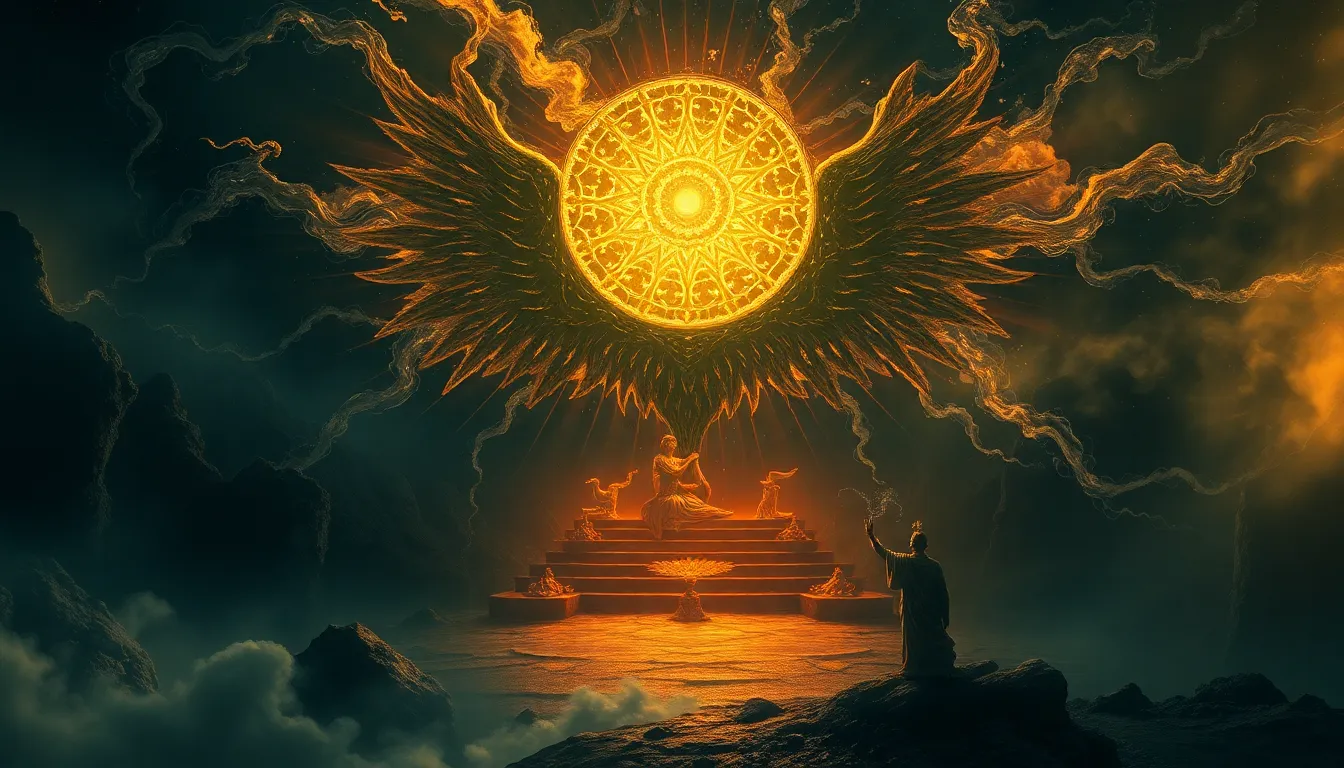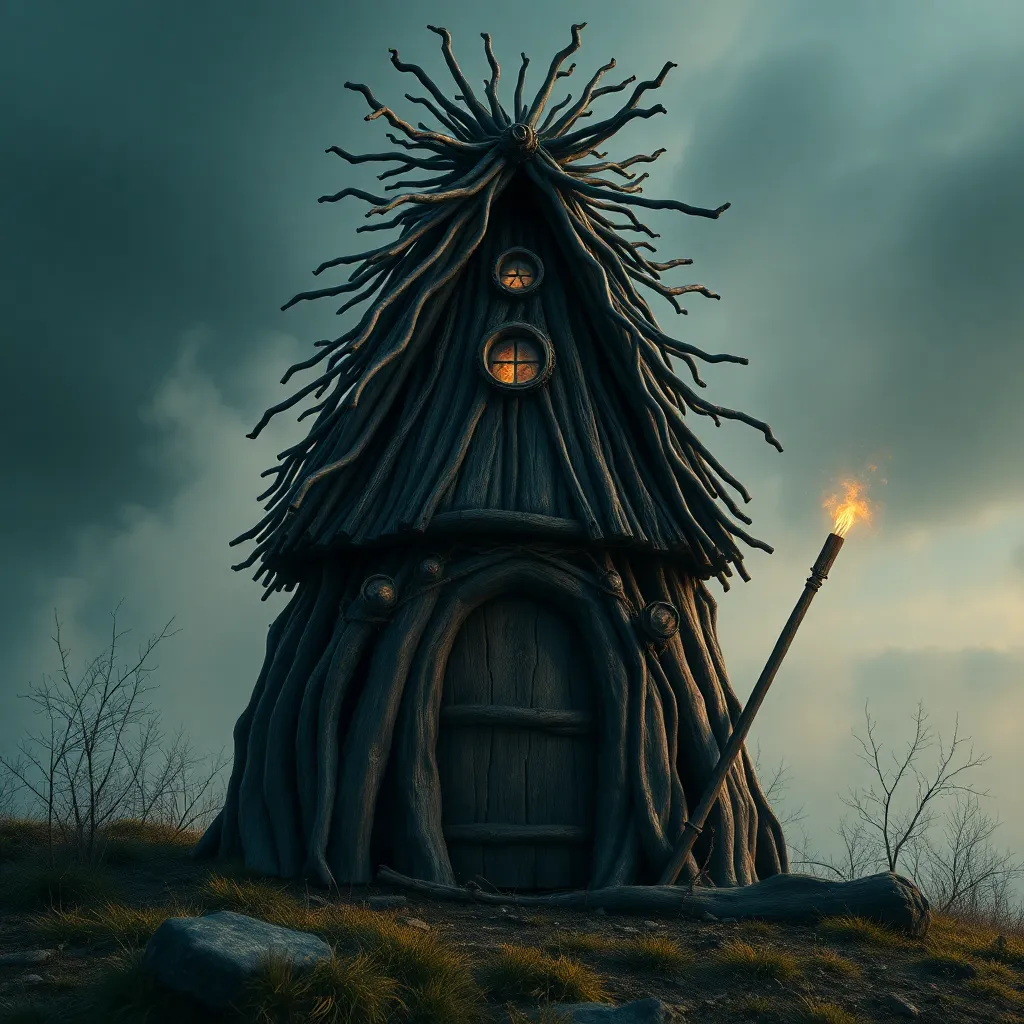The Sacred Realm: Exploring the Divine in Mythology
I. Introduction to Mythology and the Concept of the Divine
Mythology can be defined as a collection of stories, traditions, and beliefs that cultures create to explain the world around them. These narratives often involve supernatural beings and events, embodying the values, beliefs, and aspirations of a society. The concept of the divine is central to mythology, representing the forces that govern existence and the nature of reality.
Across cultures, the divine often manifests in various forms, such as gods, goddesses, spirits, and cosmic forces. These entities play crucial roles in explaining natural phenomena, establishing moral codes, and providing comfort in the face of uncertainty and death. Understanding the sacred realm is fundamental to grasping how different cultures interpret their existence and the universe.
II. The Nature of the Sacred: Deities and Their Attributes
Deities can be categorized into several types, including:
- Gods: Typically male figures associated with creation, war, wisdom, and other significant aspects of life.
- Goddesses: Often embodying fertility, love, and the earth, these female deities hold powerful roles in mythology.
- Spirits: These may be ancestral or elemental spirits that influence the natural world and human affairs.
Divine figures possess various characteristics and symbols that convey their powers and attributes. For example, thunderbolts may symbolize a storm god’s might, while a serpent may represent wisdom and rebirth. The duality of benevolent and malevolent deities is also prevalent, where gods may embody both creation and destruction, reflecting the complexities of life itself.
III. Creation Myths: The Birth of the Sacred Realm
Creation myths serve as foundational stories that explain how the universe and humanity came into being. These myths are unique to each culture but often share common themes and motifs. For instance:
- Genesis (Judeo-Christian): The narrative of God creating the world in six days.
- Pantheon of gods (Greek): The emergence of gods from chaos, leading to the creation of the world.
- Cosmic Egg (Hindu): The universe emerging from a primordial egg, symbolizing potential and birth.
The significance of these myths lies in their ability to provide insight into cultural values about creation, existence, and the role of the divine. A comparative analysis reveals that while the stories differ, they often reflect similar existential questions and themes.
IV. Sacred Spaces: Temples, Shrines, and Natural Landscapes
The role of sacred spaces varies significantly across mythologies, serving as places of worship, pilgrimage, and connection to the divine. Temples and shrines are constructed to honor deities and facilitate rituals, while natural landscapes, such as mountains and rivers, are often imbued with divine significance.
Geography plays a crucial role in shaping these sacred spaces. For example:
- The Parthenon (Greece): A temple dedicated to Athena, situated on the Acropolis of Athens.
- Stonehenge (England): An ancient monument believed to have astronomical and religious significance.
- The Ganges River (India): Considered sacred by Hindus, symbolizing purity and the divine.
Modern interpretations of ancient sacred sites often focus on their historical, cultural, and spiritual significance, revealing the enduring legacy of these spaces.
V. Myths of the Afterlife: Journeys Beyond the Mortal Realm
Beliefs about the afterlife are prevalent in mythology, reflecting humanity’s desire to understand what lies beyond death. Different cultures portray various afterlife scenarios, including:
- Heaven and Hell (Christianity): The concepts of eternal reward and punishment based on one’s earthly life.
- Valhalla (Norse): The hall of slain warriors, where they feast and prepare for Ragnarok.
- Underworld (Greek): A realm ruled by Hades, where souls are judged and assigned to different areas based on their deeds.
Divine judgment and reward are central themes in these myths, serving to reinforce moral behavior and societal norms. A comparative analysis of prominent afterlife myths reveals shared concerns about morality, justice, and the unknown.
VI. Rituals and Worship: Engaging with the Divine
Rituals play a vital role in mythology, allowing individuals and communities to engage with the divine. These rituals can take many forms, including:
- Offerings: Gifts presented to deities to gain favor or express gratitude.
- Prayers: Communicating with the divine, seeking guidance or intervention.
- Festivals: Celebratory events that honor deities and mark significant seasonal or life events.
Over time, worship practices have evolved, adapting to changing cultural contexts while retaining their core significance. These rituals serve to reinforce community bonds and individual spirituality.
VII. Heroes and Demigods: The Human-Divine Connection
Mythological heroes often serve as intermediaries between the sacred and the mortal, embodying qualities that resonate with human experience. Notable mythological heroes, such as:
- Hercules (Greek): A demigod known for his strength and twelve labors, representing perseverance.
- Gilgamesh (Mesopotamian): A king who sought immortality, reflecting humanity’s quest for meaning.
- Arjuna (Hindu): A warrior prince faced with moral dilemmas, symbolizing the struggle between duty and desire.
The significance of human flaws in these narratives highlights the complexity of the human condition and the relationship with the divine. These stories often convey lessons about humility, courage, and the acceptance of one’s limitations.
VIII. Sacred Texts and Oral Traditions: Preserving the Divine
Sacred texts from various cultures serve as crucial repositories of mythological knowledge and divine teachings. Examples include:
- The Bible (Christianity): A compilation of texts that convey spiritual teachings and historical narratives.
- The Vedas (Hinduism): Ancient scriptures that encompass hymns, rituals, and philosophical teachings.
- The Epic of Gilgamesh (Mesopotamian): One of the earliest works of literature, exploring themes of heroism and mortality.
Oral traditions also play a significant role in mythological storytelling, preserving narratives through generations. These traditions shape our understanding of the divine, providing insight into cultural values and beliefs.
IX. The Influence of Mythology on Contemporary Culture
Mythological references permeate literature, art, and film, influencing modern storytelling and cultural expressions. From the works of Shakespeare to contemporary fantasy novels, mythological themes resonate with audiences. Additionally, ancient myths often inform modern spirituality, as individuals seek meaning and connection in a rapidly changing world.
The resurgence of interest in mythology in popular culture can be seen in:
- Film franchises: Such as the Marvel Cinematic Universe, which draws on Norse and Greek myths.
- Literature: With bestselling series like “Percy Jackson” that introduce young readers to Greek mythology.
- Art: Where mythological themes continue to inspire contemporary artists and creators.
X. Conclusion: The Enduring Legacy of the Sacred Realm
In summary, mythology and the divine play significant roles in shaping human understanding of existence and the universe. The exploration of the sacred realm reveals deep insights into cultural values, moral questions, and the search for meaning. Studying mythology offers a lens through which we can appreciate the richness of human experience and the enduring legacy of the divine across time and space.



